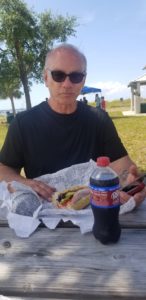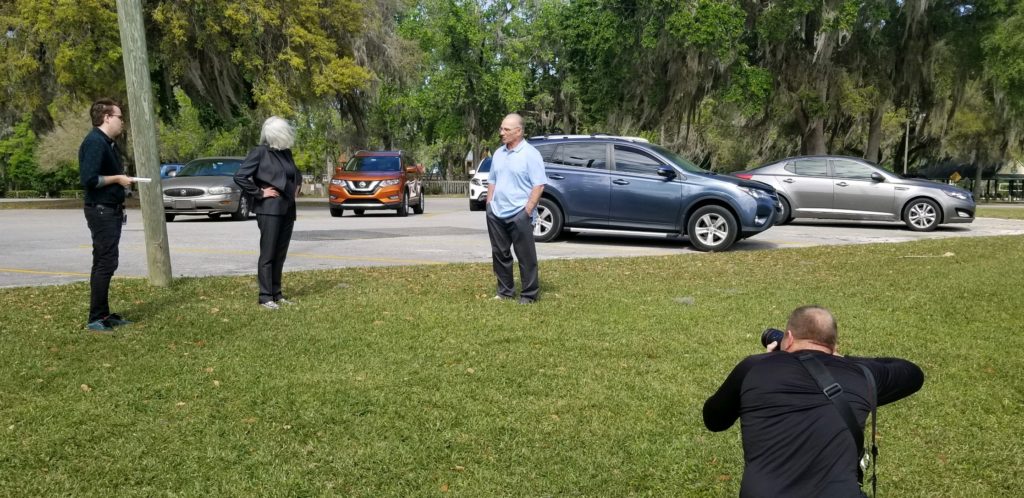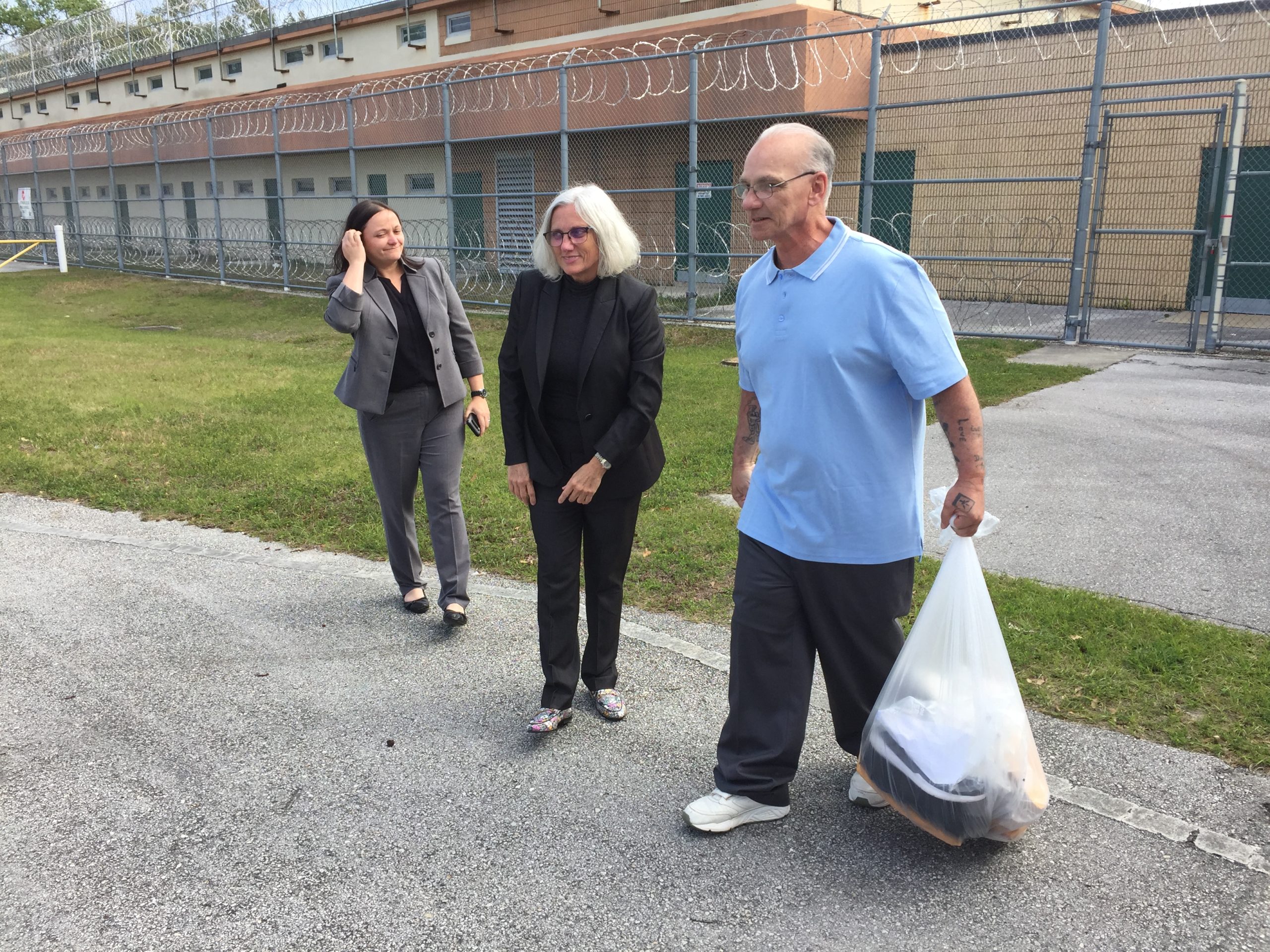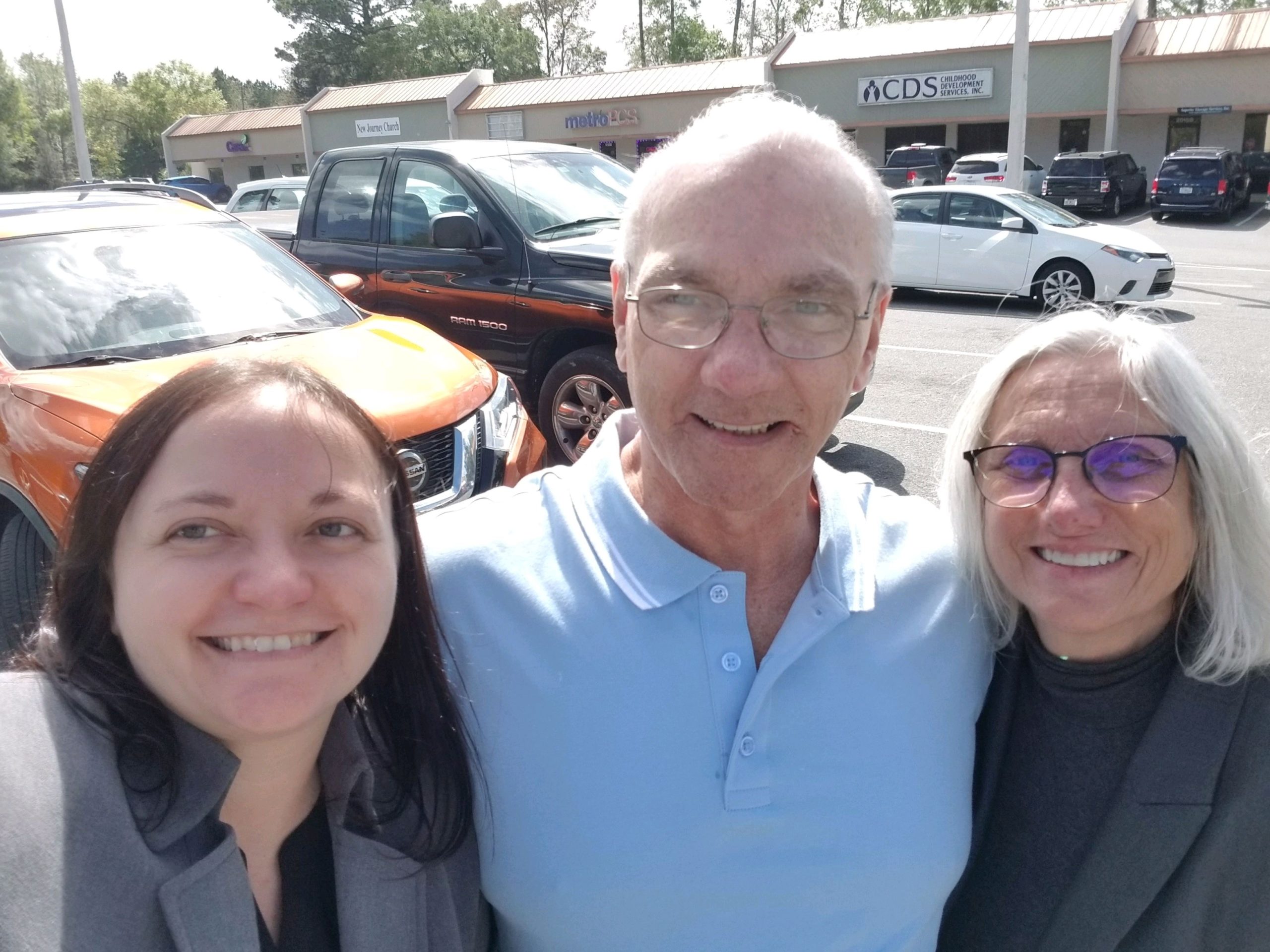I am a wonderful cook and baker. In the county jail, I was well known for cooking and baking. One night, I made a pizza and others tried to argue with me and say it was a delivery pizza, but I made that with a microwave.
About a week after I was freed, I went to a barbeque with Clemente Aguirre — who I met when I was on death row — and Danny Brown, both exonerees who live in my community. We had a fun time. Earlier this week, I made deluxe hamburgers with everything: green peppers, onion, garlic and parmesan cheese. They were huge, and me and Clemente sat there eating them. And the other day, Kate O’Shea, an investigator that helped with my case, took me to the beach with her husband where I had my first sub [sandwich] since I came home, and it made me feel like a human again.

Paul eating his first sandwich after 35 years in prison. Photo courtesy of Kate O’Shea.
We walked in the sand and watched the kids playing on the little boards.
The big thing I’ve been focused on is learning how to live life out here. It’s a different world in there [prison] than it is out here.
The first thing I wanted to do was walk on grass — and it was so wonderful. Some people might think it’s kind of corny, but for me it was a big thing. At first, I was just trying to balance stepping on something soft. There was no grass to walk on in prison, always hard concrete. The grass was nice and soft.
Last night, I made a cup of coffee and sat outside on the porch of my little house, just sitting down not thinking about anything, and it really hit me, “Dude you’re free.” It was amazing. It made me cry.
… It really hit me, “Dude you’re free.”
I’m living in a beautiful little house and help with handy work for four houses that are all for exonerees. Me doing a little handyman work is my way of giving back a little bit and contributing.
Because of coronavirus, the probations department has closed their office, so they are doing home visits. I had my first one, and my officer surprised me — and he was surprised by my home.
He said, “Wow, this house is nice and clean.”
And I said, “Yes sir, that’s just the way I leave it.”
The whole time I was in my cell I never had a broom or a mop. I washed everything by hand, my sheets, laundry, everything. I took my laundry to the laundromat recently, and I didn’t know how to use the machine — it was embarrassing at first.
In prison, my whole life was in that cell. We went to the yard, I played volleyball two times a week. And then in jail, I used to walk all day long. But, out here, I bike — for medical and psychological reasons to get out there in society and feel normal.
I also paint and sketch. It’s my form of meditation.
I also paint and sketch. It’s my form of meditation. My favorites are landscapes. It gives me a chance to sort my thoughts out. Right now, I’m designing a laundry shed and drawing up the blueprint for that.

Paul Hildwin walking in grass for the first time in 35 years. Photo by Anthony Scott/Florida Innocence Project.
I am so grateful to the people that helped me get to where I am. People like my lawyer, Lyann Goudie, who represented me for the last six years — we call her “the beast,” because she’s that good — and Nina Morrison at the Innocence Project, who worked very hard on my case for ten years while I was on death row. And Kate, who put so much time, effort and heart into my case.
I look at Facebook and I see so many wonderful comments and good wishes, and I want to tell people who are still fighting for justice in prison: Don’t give up.
It’s a hard fight. We are fighting a very corrupt system, but don’t let it beat you. I am a perfect example … Some people call it lucky — I call it freedom. People inside need to know they are not fighting alone.
Editor’s Note: Interview has been lightly edited for clarity.




I’m so happy for and sad at the same time for all the time spent and lost. I’m glad you never gave up hope. Unfortunately during this Covid 19 seems like lock up for the rest of us but nothing compares to yours great wishes ahead and may god bless you. You and your freedom will be apart of our history on this earth. You my friend enjoy your life and run through the grass as much as you can. You are a gift of God and he will give you greatness.